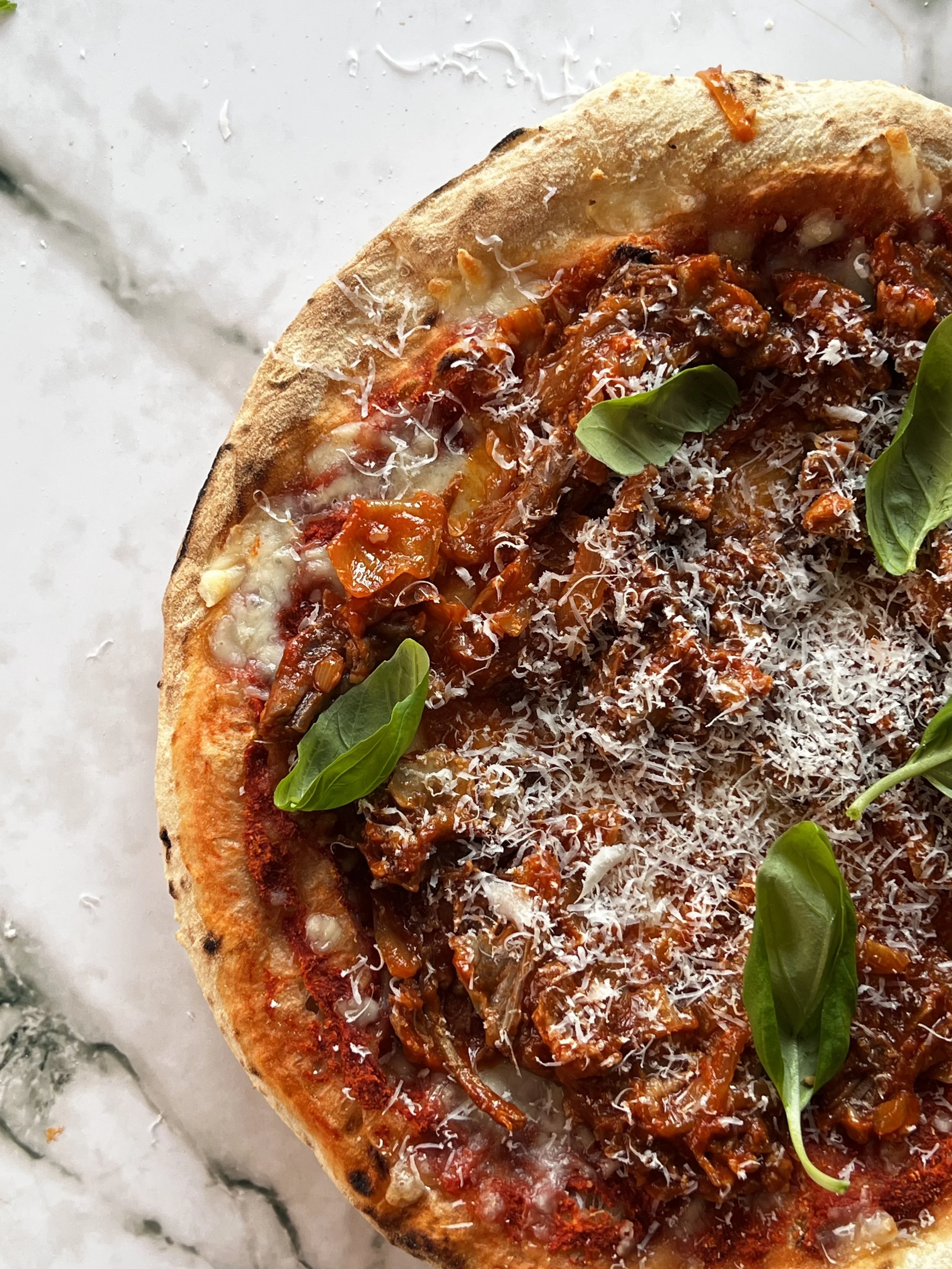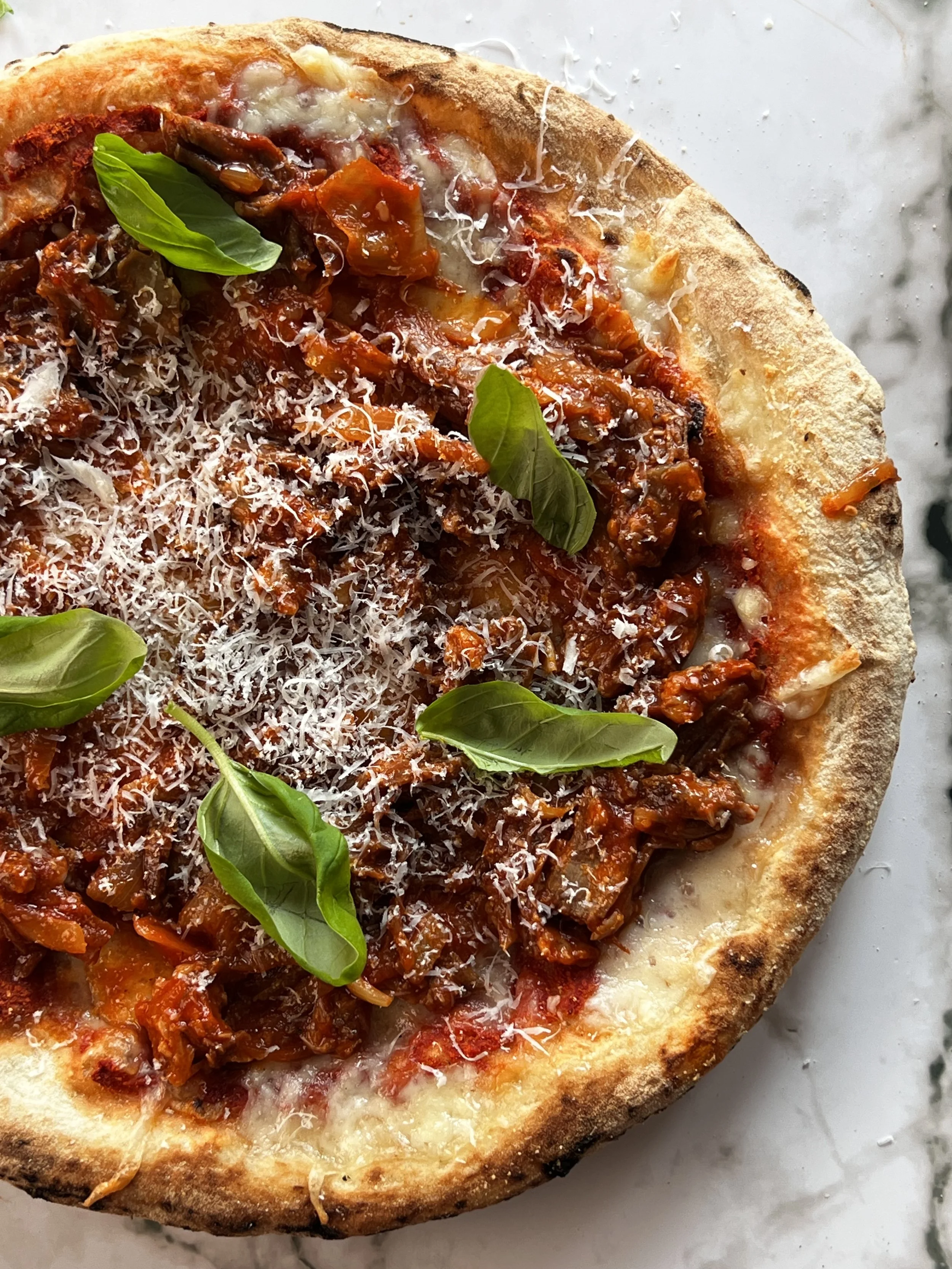Picchiapò Pizza: How Roman Tradition Solves Modern Food Waste Problems
Traditional technique meets commercial recipe development innovation
Your kitchen throws away perfectly good braised meat while buying expensive pizza proteins?
That's not just wasteful - it's missing the point of what makes traditional Roman cooking brilliant.
This picchiapò pizza proves you can transform "leftover" bollito into signature menu items while honoring techniques that have fed Romans for generations. The secret isn't finding new ingredients - it's understanding why old techniques survive.
The Recipe Engineering of Roman Resourcefulness
Traditional picchiapò wasn't created as a leftover dish - it was engineered to maximize the value of every ingredient in the kitchen. This commercial recipe development approach applies perfectly to modern restaurant operations.
The Original Problem: How do you make boiled meat (used for stock) appealing as a standalone dish?
The Roman Solution: Re-cook with aromatics until it becomes something completely different.
The Modern Application: Transform stock meat into premium pizza topping.
The Picchiapò Process: Technique Over Ingredients
Phase 1: The Bollito Base Beef or mixed meats boiled for stock production aren't waste - they're the foundation of your next profit center. The gentle cooking creates perfectly tender protein that just needs proper finishing technique.
Phase 2: The Transformation Traditional picchiapò technique: slow-cook the bollito with onions and tomatoes until the meat breaks down and the sauce concentrates. This isn't reheating leftovers - it's food formulation services that creates entirely new flavor profiles.
Commercial Adaptation:
Batch-cook picchiapò during slow periods
Portion for pizza assembly
Maintains quality during holding periods
Scales consistently for high-volume service
Pizza Menu Development
Base Strategy: Simple tomato base allows the picchiapò to be the star Cheese Application: Caciocavallo provides sharp, salty contrast without overwhelming the meat Finishing Touch: Fresh basil adds aromatic brightness that balances the rich, concentrated flavors
Why This Combination Works: The picchiapò provides umami depth, the caciocavallo adds textural interest, and the basil prevents flavor fatigue. Each component has a specific function in the final dish.
Commercial Recipe Development
For Full-Service Restaurants with Pizza Programs: Your daily stock production creates tomorrow's pizza components. This isn't just sustainability - it's profit multiplication through systematic recipe engineering.
Integration Examples:
Monday's osso buco braising → Tuesday's picchiapò pizza special
Stock meat from soup service → evening pizza topping
Braise overflow → weekly rotating pizza offerings
For Pizzeria Operations: Source affordable braising cuts, develop systematic cooking processes, create signature offerings that competitors can't easily replicate.
Sous Vide Consulting Opportunities
Controlled Braising Applications: Traditional picchiapò technique adapts perfectly to sous vide precision:
72°C for 12-24 hours for perfect texture
Controlled sauce reduction post-sous vide
Extended holding capability for commercial service
Consistent results regardless of staff experience
Scaling Benefits: Sous vide picchiapò preparation creates menu development services opportunities for operations needing consistent meat texture and flavor development.
Food Formulation Services Strategy
Traditional Technique Adaptation: Roman cooking survived because it solved real problems. Modern commercial kitchens face similar challenges:
Ingredient cost control
Waste reduction
Labor efficiency
Consistent quality delivery
Cultural Authenticity Benefits: Customers increasingly value authentic cultural techniques over fusion novelty. Picchiapò pizza tells a story that resonates with diners seeking genuine experiences.
Menu Development Services Scaling Framework
Seasonal Variations:
Winter: heartier beef cuts, robust tomato sauce
Spring: lighter veal preparations, fresh herb integration
Summer: mixed meat combinations, fresh tomato applications
Fall: game meat adaptations, preserved tomato usage
Cultural Expansion Opportunities:
French: coq au vin transformation for pizza
Spanish: cocido meat reutilization techniques
Regional Italian: adapt local braising traditions
Pizza Menu Development Business Model
Cost Engineering Analysis: Braising cuts cost 60-70% less than premium pizza proteins but proper technique creates perceived value equal to expensive ingredients. Your commercial recipe development creates profit through technique, not ingredient expense.
Margin Optimization:
Primary use: stock production (essential kitchen operation)
Secondary use: premium pizza topping (additional profit center)
Waste elimination: 100% ingredient utilization
Labor efficiency: one cooking process serves multiple menu applications
Recipe Engineering for Commercial Success
Staff Training Benefits: Traditional picchiapò technique breaks into clear steps that reduce training complexity:
Brown aromatics
Add tomatoes and meat
Slow-cook until sauce concentrates
Cool, portion, store for pizza assembly
Quality Consistency: Time and temperature control create consistent results regardless of meat cut variations or staff experience levels.
Equipment Integration: Uses standard commercial braising equipment. No specialized purchases required for implementation.
Traditional Wisdom Meets Modern Operations
Roman Cooking Philosophy: Nothing gets wasted, everything has potential, technique transforms simple ingredients into memorable experiences.
Modern Commercial Application: Your food formulation services should follow the same principles. Every ingredient purchase should serve multiple menu functions through proper technique application.
Customer Experience: Diners taste the difference between reheated leftovers and properly executed traditional techniques. Picchiapò pizza delivers authentic Italian flavors that justify premium pricing.
Commercial Recipe Development Lessons
Technique Transferability: The slow-cook-and-concentrate technique works for any braised protein. You're not selling one pizza recipe - you're providing a systematic approach to protein waste elimination.
Cultural Connection: Traditional techniques carry cultural authenticity that resonates with customers seeking genuine dining experiences rather than fusion novelty.
Operational Integration: One base technique (braising for stock) creates multiple menu applications through systematic finishing processes.
Innovation Through Tradition
While competitors add exotic ingredients and call it "gourmet," you're proving that menu development services based on traditional techniques create better customer experiences and improved profitability.
This picchiapò pizza demonstrates that the best innovations often come from understanding why traditional techniques work and adapting them for modern commercial requirements.
For Restaurant Operators: Every braising operation in your kitchen represents a commercial recipe development opportunity. The question isn't whether you have time for additional prep - it's whether you're maximizing the value of prep you're already doing.
For Menu Consultants: Client success comes from systems that improve both ingredient utilization and menu differentiation. Traditional technique adaptation delivers both while creating authentic cultural connections.
Your Kitchen, Your Heritage
This isn't about copying a Roman pizza. It's about understanding that successful food formulation services connect cultural wisdom with commercial efficiency.
Whether you're developing waste reduction programs, creating signature menu items, or building cultural authenticity, the principle remains: traditional techniques survive because they solve real problems efficiently.
The difference between trendy fusion and lasting innovation? Innovation respects why traditional techniques work before adapting how they work for modern applications.


